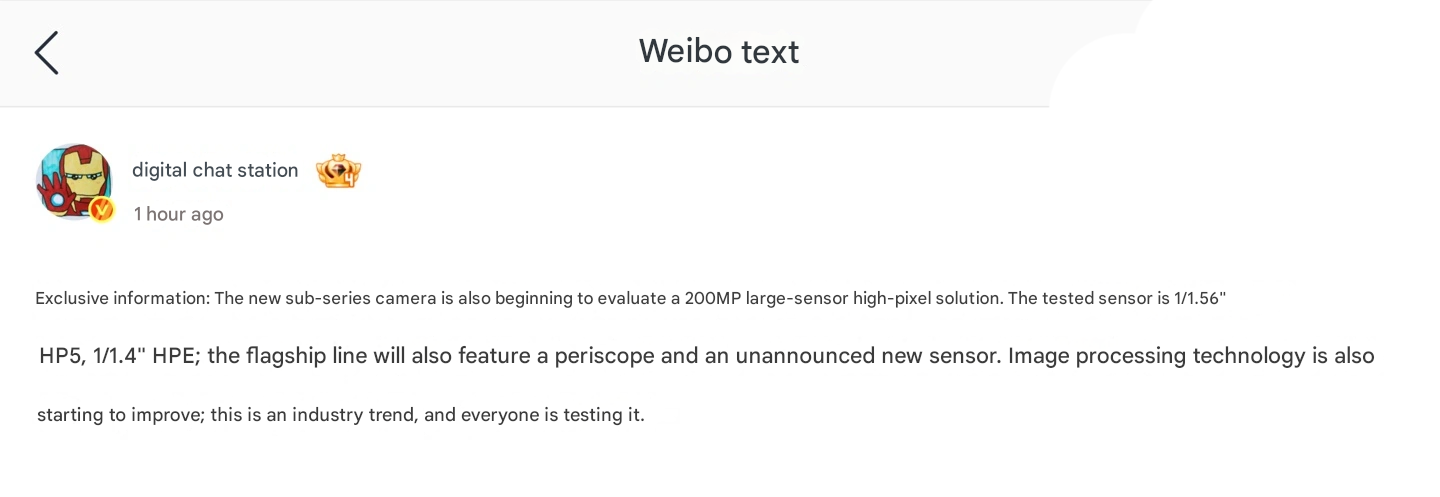On November 20, IT Home reported that popular tech blogger @DigitalChatStation revealed, via Weibo, that Xiaomi’s REDMI division is testing a 200-megapixel large-sensor camera for a new smartphone. The insider claimed that the device is testing CMOS sensors such as the 1/1.56-inch HP5 and 1/1.4-inch HPE, along with a periscope telephoto sensor and an unreleased imaging sensor. This move indicates that REDMI is serious about improving mobile photography as multiple manufacturers are working on ultra-high-resolution sensors across the industry. More information about Xiaomi REDMI imaging innovations may be read here.
New Imaging Approach from REDMI
The blogger afterwards confirmed that the HPE sensor is an iterative upgrade of the HP9, customized and optimised for REDMI. Some thought this may be connected with Vivo’s HPB sensor; however, the HPE is specific to Xiaomi. This follows the strategy pursued by REDMI to push the performance of the camera in its flagship phones while keeping prices relatively competitive. As industry insiders point out, though one-inch sensors are a rare breed in smartphone cameras, more and larger 1/1.4-inch and 1/1.56-inch sensors are being implemented as a norm for high-end imaging solutions.
Expected Features and Flagship Potential
According to the present testing, the future REDMI device may include:
- 200MP main sensor (1/1.56-inch HP5 or 1/1.4-inch HPE)
- Periscope telephoto lens for extended optical zoom
- Advanced imaging AI and optimized image processing
It sets the stage for the device to become a flagship-level REDMI K Ultra series phone, coming after the REDMI K90 Pro Max, which boasts a 50MP main camera, a 50MP ultra-wide lens, and a 50MP 5X periscope telephoto lens with 10X lossless zoom and OIS. The 200MP sensor of the coming model would mean a formidable jump in the imaging capabilities of REDMI.
Industry Trends and Implications
The move to 200MP sensors is indicative of the trend within the industry towards ultra-high-resolution cameras that improve computational photography and low-light performance. A number of manufacturers are also working on similar sensors, meaning mobile imaging technology is improving fast. The result for users could be sharper photos, better zoom, and more flexible camera arrangements in the near future.


 Emir Bardakçı
Emir Bardakçı





